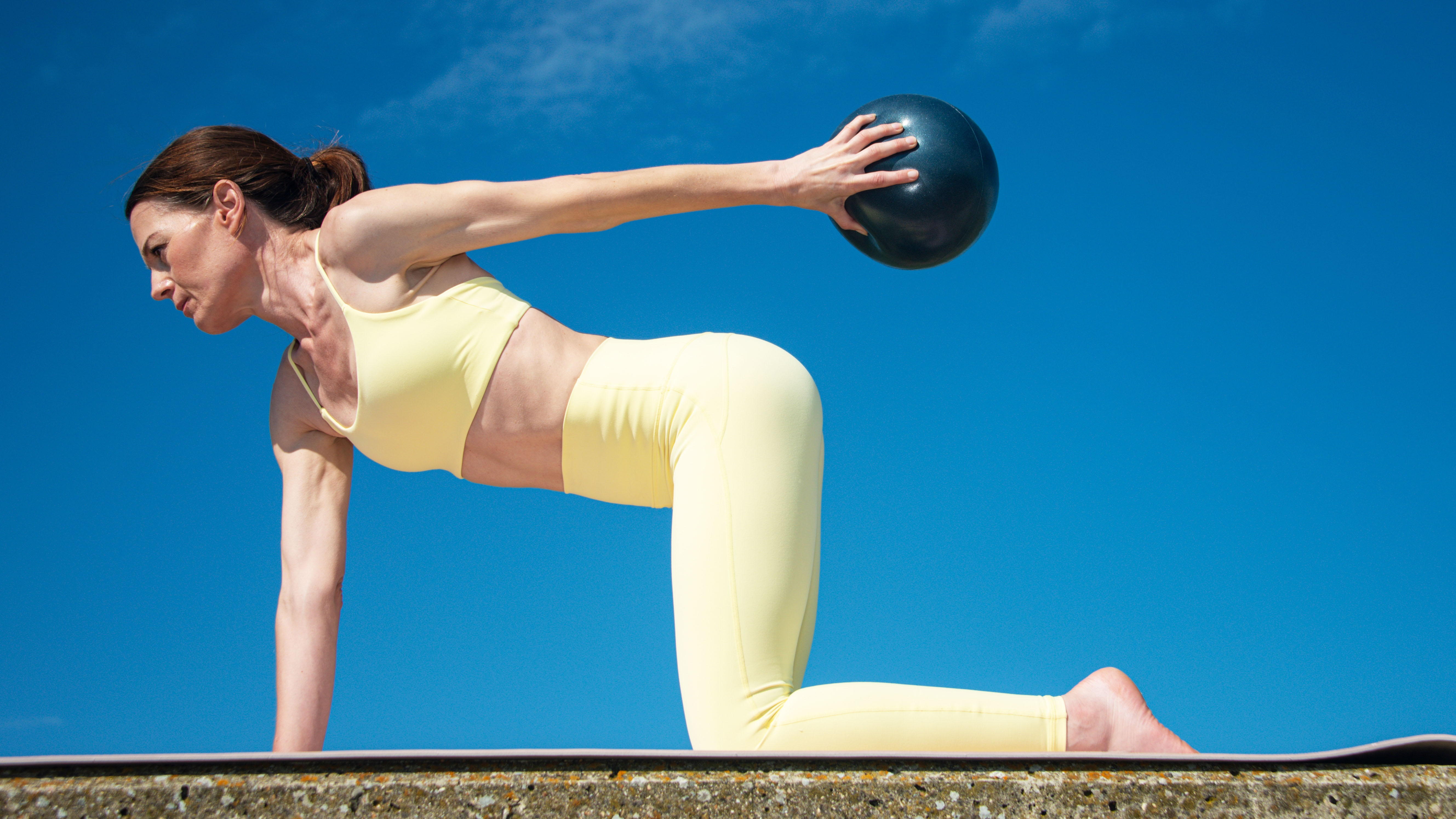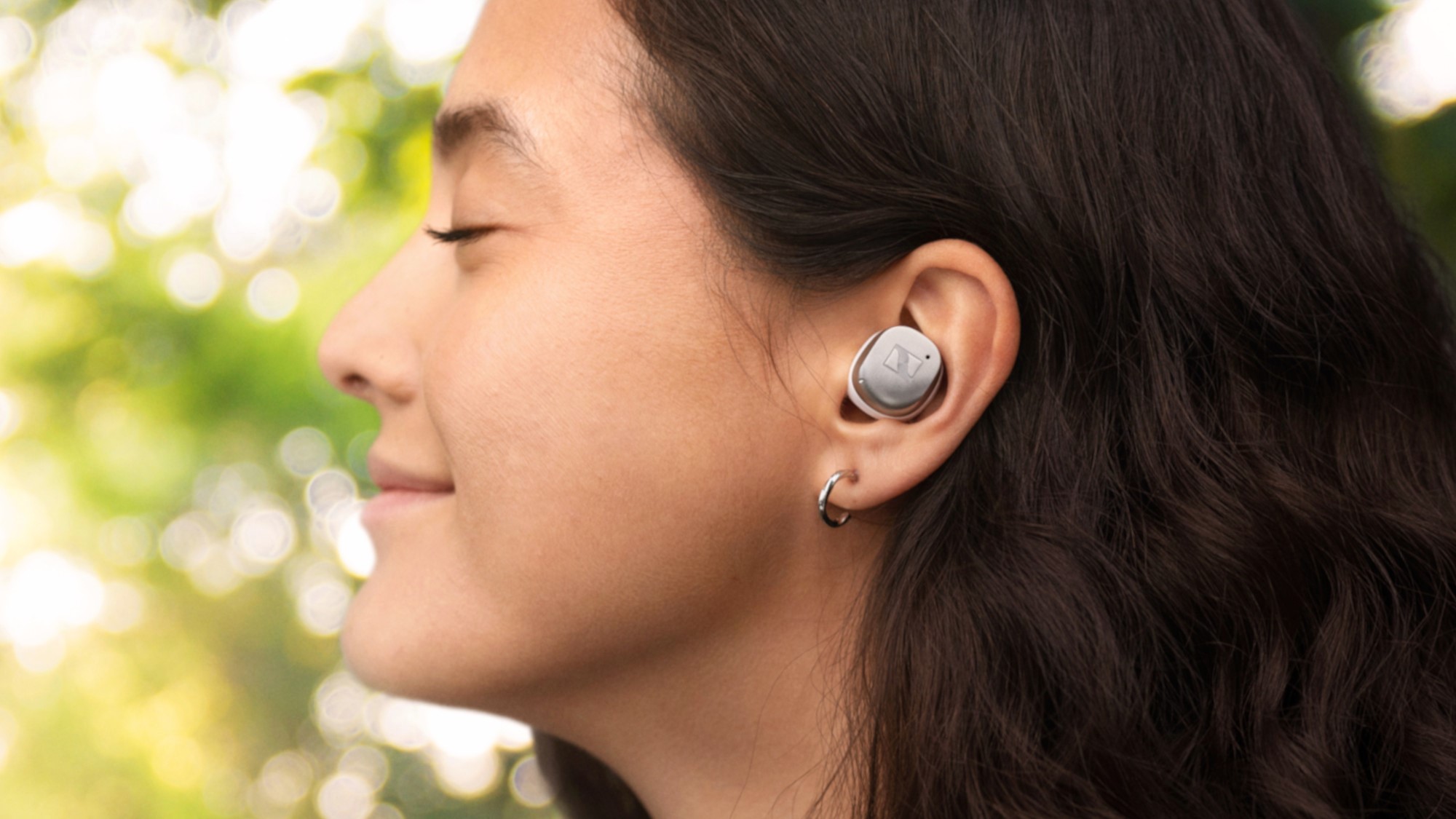No, not kegels — this deep core routine will strengthen your abs and pelvic floor
Put your core muscles to the test with these moves

I knew that pregnancy and childbirth could affect your core and pelvic floor, but I didn’t realize how much it would until I went through it myself. I’m 12 weeks postpartum now, and am just starting to rebuild strength in these areas.
Your abs and pelvic floor muscles all stretch during pregnancy to accommodate your growing baby. Unless it’s addressed after they’re born, these changes in the muscle can lead to long-term weakness, dysfunction, pain, and injury.
Knowing I had a lot of work to do, I scrolled through Instagram to see if I could find a good deep core and pelvic floor routine to follow. I discovered trainer Nikki Bergen’s recent workout and decided to try it.
While these exercises are great for those who’ve just had a baby, they’re beneficial for everyone — if you’ve got a yoga mat and pilates ball, you can give this workout a go too.
How to do Nikki Bergen’s abs and pelvic floor routine
Check in with your medical team before attempting any new kind of activity, especially if you’re postpartum. Meeting with a certified personal trainer is also a good idea, as they can ensure you’re moving with correct form.
There are seven exercises in this workout, all done on the mat with a Pilates ball. Bergen doesn’t specify how many reps to do or how much rest to take, so I chose to do 10 reps of each exercise with brief pauses in between.
The exercises are:
Get instant access to breaking news, the hottest reviews, great deals and helpful tips.
- Bear rock backs
- Side plank clam twist
- Star plank reach
- Ball t-spine extension
- Balanced kick back tucks
- Single-bridge cross press
- Inverted open book
I was excited to try Bergen’s workout, but quickly discovered it might be too advanced for me. Here are my other thoughts.
A post shared by Nikki Bergen PILATES + PELVIC HEALTH (@thebellemethod)
A photo posted by on
The exercises were harder than they looked
After being in the fitness industry for so long, I’ve learned that the easiest-looking exercises are often the ones that will leave you crying in a puddle of your own sweat.
I expected this workout to humble me, despite it looking somewhat doable. Still, I was surprised when I started to tremble during the first few reps of each move, so much so that I had to take breaks halfway through each set. Even if your abdominals haven’t been compromised by pregnancy, this program will challenge your deep core and pelvic floor strength in ways you may not be used to.
I needed to modify quite a few of the exercises in order to do them. Bergen doesn’t provide any modification options to follow, so keep that in mind when trying this yourself.
2. The ball added another level of difficulty
The most challenging aspect of this workout was the inclusion of the ball. Some of the exercises would have been relatively easy without it, like the balance kick back tucks, and inverted open book. However, the ball adds a lot of instability, and that forces your core stabilizing muscles to kick in big time. Since mine are still pretty weak, these movements proved to be very difficult.
You always have the option of ditching the ball, which is what I did. You’ll still be working the right areas, and it’s less likely you’ll compensate with the wrong muscle groups. Which leads me to mention...
3. I felt my hips and legs trying to compensate
My quads and hip flexors really wanted to do the bulk of the work for this routine. In fact, I had to pause a lot on the bear rock backs because my legs were wearing out so quickly. My core was totally asleep at the wheel until I reduced my range of motion, removed the ball, and took much longer rests between reps. Only then was I able to relax my quads and bring my abs into the equation.
During the inverted open book, my hip flexors were working hard to keep my legs in the air. I had to remove the ball (again), focus on my breathing, and place my feet on the floor between each rep in order to activate my core properly.
If your legs and hips are tiring out, remember to incorporate diaphragmatic breathing, reduce your range of motion, and rest when needed.
4. I’ll revisit this routine in a few weeks
I had high hopes for this workout, but ultimately I don’t think I was ready for it. You have to walk before you can run, so I’ll stick to my heel slides and glute bridges for now.
On the plus side, I now have a new goal I can work towards. I’ll continue building base strength through pelvic floor therapy and rudimentary exercises, and revisit this routine again once I start feeling a little stronger.
Benefits of deep core and pelvic floor workouts
Your deep core and pelvic floor muscles have a lot of important jobs, like stabilizing your hips and spine, facilitating bodily functions, and keeping your internal organs in place. Even though these muscles are constantly working to keep your body moving, they can get weak and deconditioned. Unfortunately, conventional core exercises like crunches and sit-ups are ineffective at targeting them.
The exercises in this workout zero in on your core and pelvic floor muscles, actively engaging them in the movements. They’re also safe to do for those experiencing common postpartum conditions like prolapse or diastasis recti.
Follow Tom's Guide on Google News to get our up-to-date news, how-tos, and reviews in your feeds. Make sure to click the Follow button.
More from Tom's Guide
- I'm a personal trainer — sculpt core muscle with 3 ab exercises and one dumbbell in just 15 minutes
- Over 60? This 30-minute standing wall Pilates workout will boost your full-body strength, balance, and coordination
- Forget planks — 6 Pilates exercises to help you rebuild your core postpartum

Jennifer Rizzuto is a freelance writer and certified personal trainer based in Long Island, NY. She covers various fitness-related topics and reviews for Tom's Guide. She also writes sketch comedy and short films, and performs frequently as an actor, singer, and improviser. When she's not writing, working out, or performing, you'll find her trying to convince her husband to get a dog.
You must confirm your public display name before commenting
Please logout and then login again, you will then be prompted to enter your display name.
